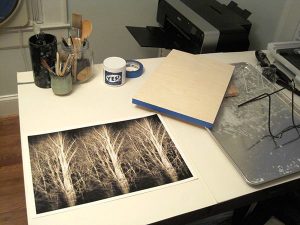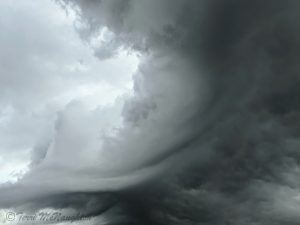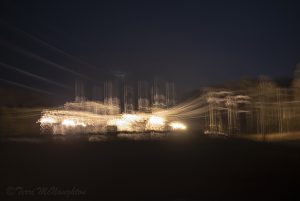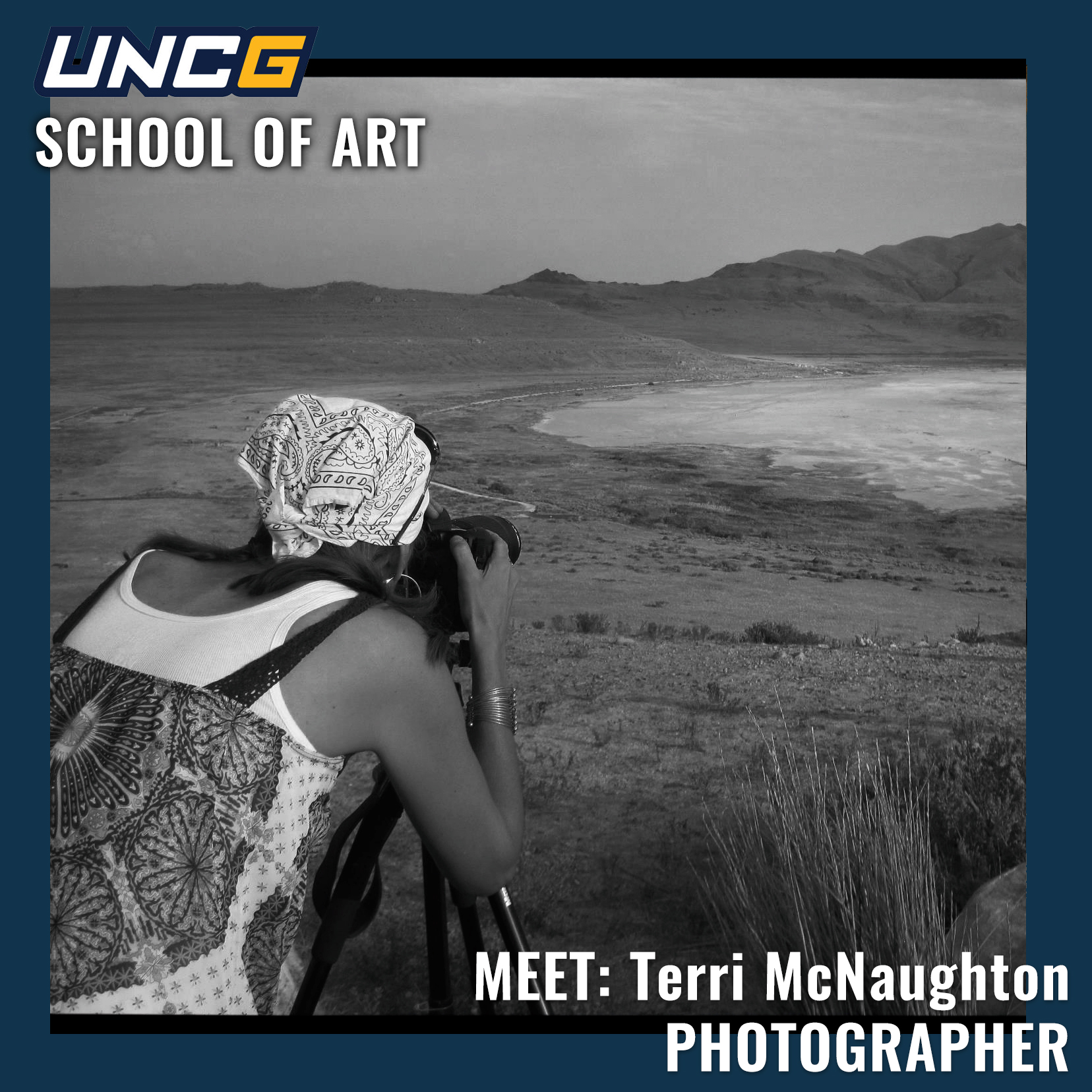Tell us about yourself?
I’m a photographic artist, organic gardener and habitat steward at Drewids Sanctuary, tree-hugging environmentalist, intersectional feminist, conflicted pacifist, off-the-beaten- path wanderer, and hopeless dreamer. Or, I am an artist who uses photography, design and mixed media as a way to explore and confront personal and global concerns.
Was there a moment or time in your life when you realized you wanted to be an artist?
Yes, throughout primary school, I talked about wanting to be an artist. I would love to draw and started taking photos after inheriting my grandpa’s cameras. However, it was a different time, and my dad grew up during the depression, so I was discouraged from pursuing art because it wasn’t seen as a viable path to make a living. I needed to choose between being a nurse in the military or secretarial training; being a pacifist, I went with the latter. I stopped drawing but continued with photography since using my grandpa’s cameras provided a connection to him. After years of working my way as far as I could go on the administrative ladder, when I turned forty, I decided to go to the Rocky Mountain School of Photography to hone and expand my skills as a photographer. Ever since then, I’ve been on a journey to become the artist I always wanted to be, participating in exhibits, art shows, and artist-in-residences. All of which led me to wanting to pursue a BFA degree.

What discipline or medium do you make most of your work in? Was there a particular course or faculty member that inspired you to further explore this way of working?
I primarily use photography in my work since I have decades of experience in the medium. However, the faculty and classes in the School of Art introduced new mediums that paired well with photography, especially new and mixed media. Typography with Prof. Rachelle Riley really inspired me to incorporate text into my work and it was a game changer for me. Including text and symbols with photographs not only lends support to the visual message but can enhance it. I also found a love for creating videos after taking Concepts in Time-based Media with Prof. Daniel Hale. Video creation requires a lot of the same skills as photography, so it was both familiar and challenging and definitely an expansion beyond still images.
Currently, what is your art practice about?
My artwork is a manifestation of personal and global concerns that create inner conflict between feelings of hope and despair. Nature and our place within it, is a recurring theme in my work because it is a subject where the dichotomy of my emotions and concerns plays out in real-time. I use aesthetics of mood and illusion to convey the inner conflict and struggle to maintain a ray of hope. The resulting images are a construct of the world I see filtered through my state of being during the moments of confronting and processing these concerns.
What does your art practice do for you? In other words, why do you make art?
Art offers me a way to gain agency over the emotional struggle between hope and despair by allowing me to explore the space of contrast between the opposing attitudes.

What kind of experiences did you have in the School of Art that you found memorable and valuable to you as an artist?
All of my instructors and classes in the School of Art provided value to me as an artist because they all offered a new skill or expanded on an old one. The pandemic hit during my second semester at UNC-G, so I have missed out on some community events that would have made the experience even richer. However, even though school was remote, the teachers made every effort to make the classes similar to in-person classes by allowing conversations and questions to happen, organizing break-out rooms to
share work with each other, and having class critique sessions. And they made every effort to keep students engaged and on track towards their degree. As well, the faculty and the Weatherspoon Art Museum made it possible to interact with working artists through artist talks and virtual exhibitions. Not only did it provide insight into how other artists work, but it was inspiring to talk with artists who love what they do.
What would you say to someone who wants to pursue a creative life but on the fence about a degree path in Art at UNCG?
I would advise that, an education is always beneficial in terms of gaining experience, credentials, and growth. These days, most jobs won’t even consider you for positions without a college degree. And specifically in terms of art, even if you are a gifted artist, putting yourself into a supportive, learning environment can help you learn new skills and refine existing ones. Faculty members can challenge you to dig deep to produce thought-provoking and cohesive bodies of work. As well, they can help you learn and understand the rich history of art and how it applies to your work. They are there to support you through your journey to not only be successful in school but after you graduate. They help you to learn how to talk about art, not only as it pertains to your work, but other’s as well. They help you craft an artist’s statement, cv, and resumé, as well as supply resources to apply for jobs, grants, and fellowships, as well as find communities of artists interested in the same medium. And although the pandemic took away two years of in-person studio classes for a lot of us, even virtual classes provided a great way to connect with and get feedback and inspiration from other students and
their work.
 How can we all connect with you and learn more about your art?
How can we all connect with you and learn more about your art?
I have not had a lot of time to devote to social media with work and school, but my online portfolio can be found at https://www.terrimcnaughtonphotography.com/.
